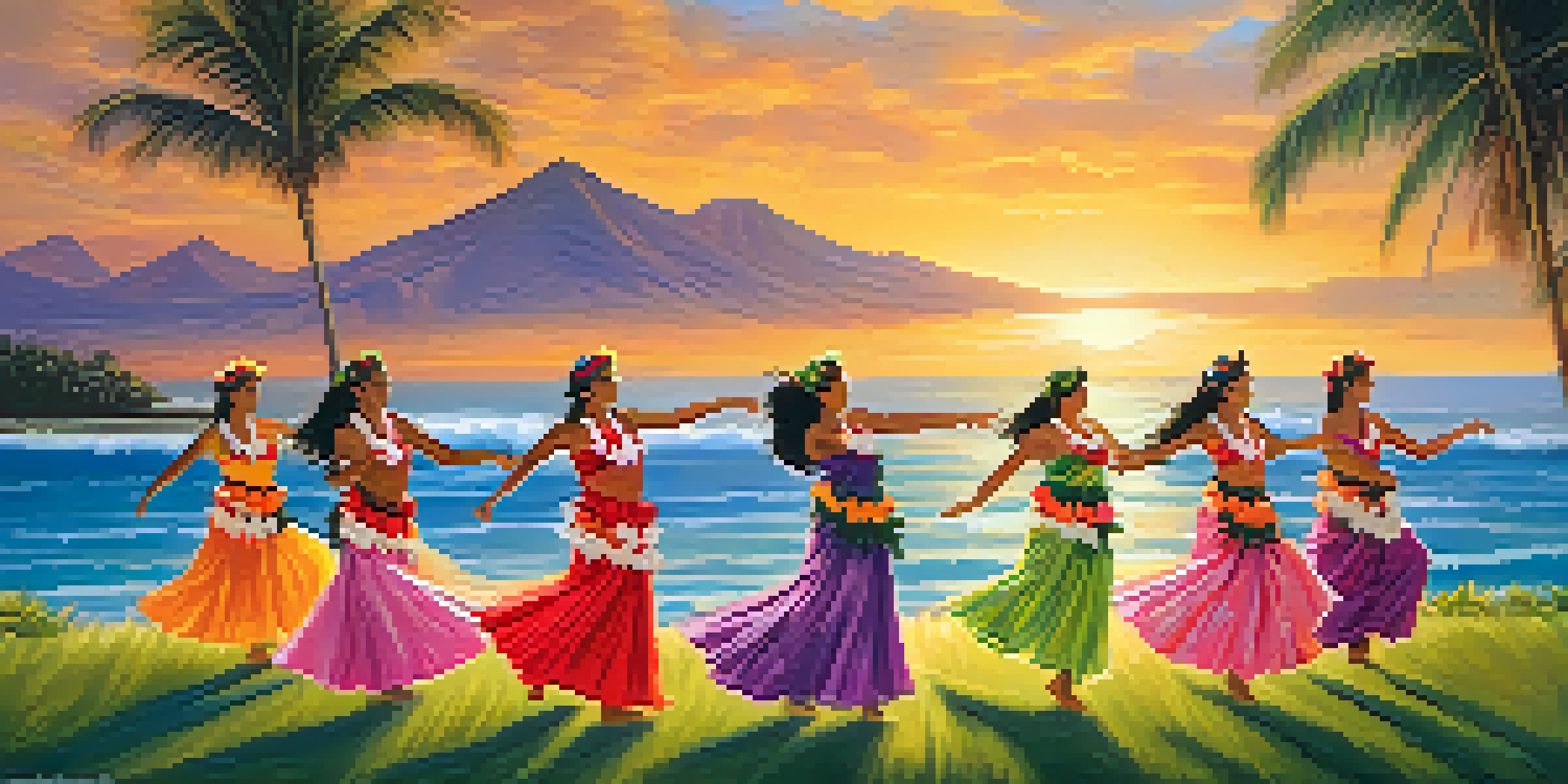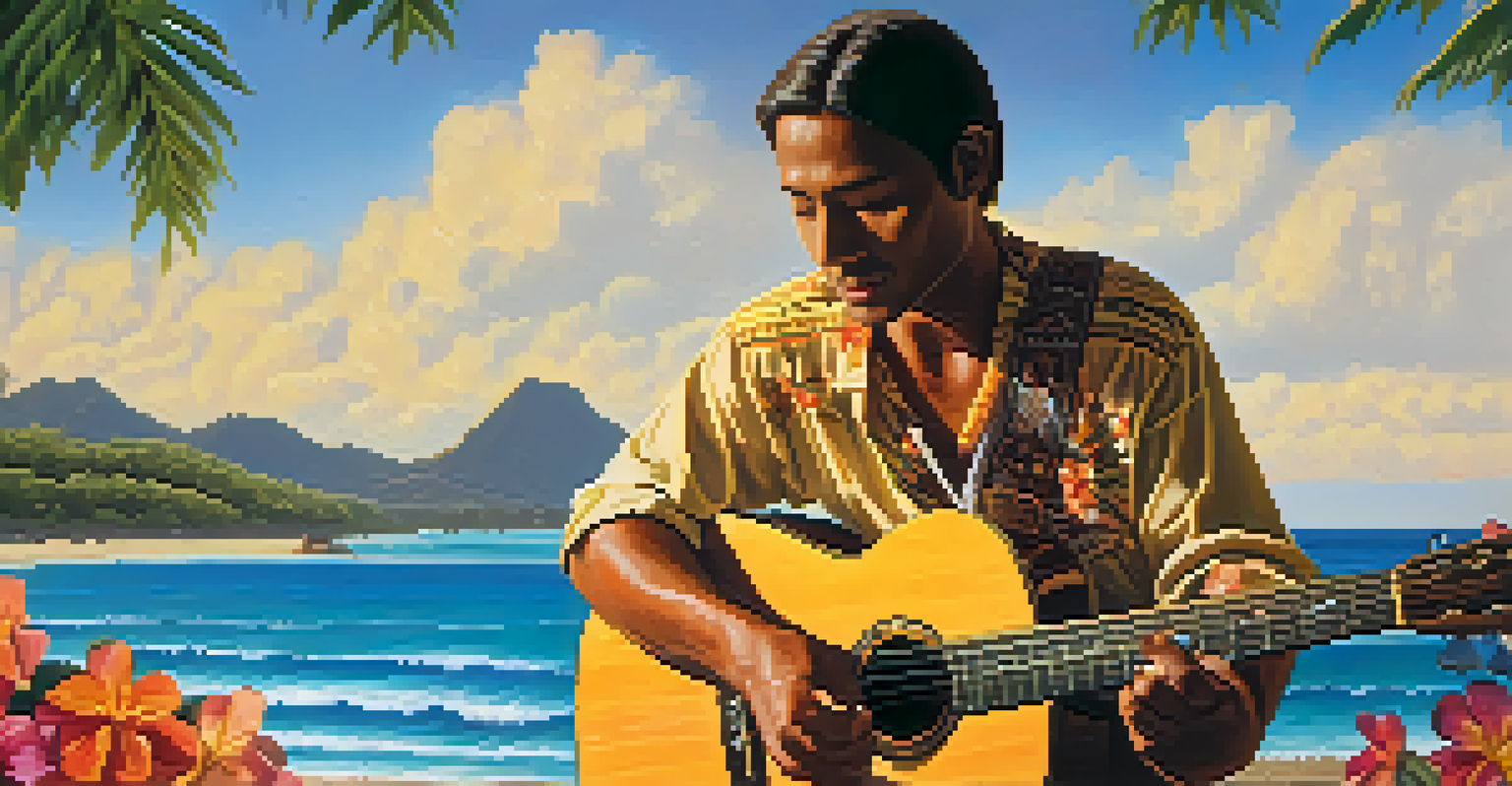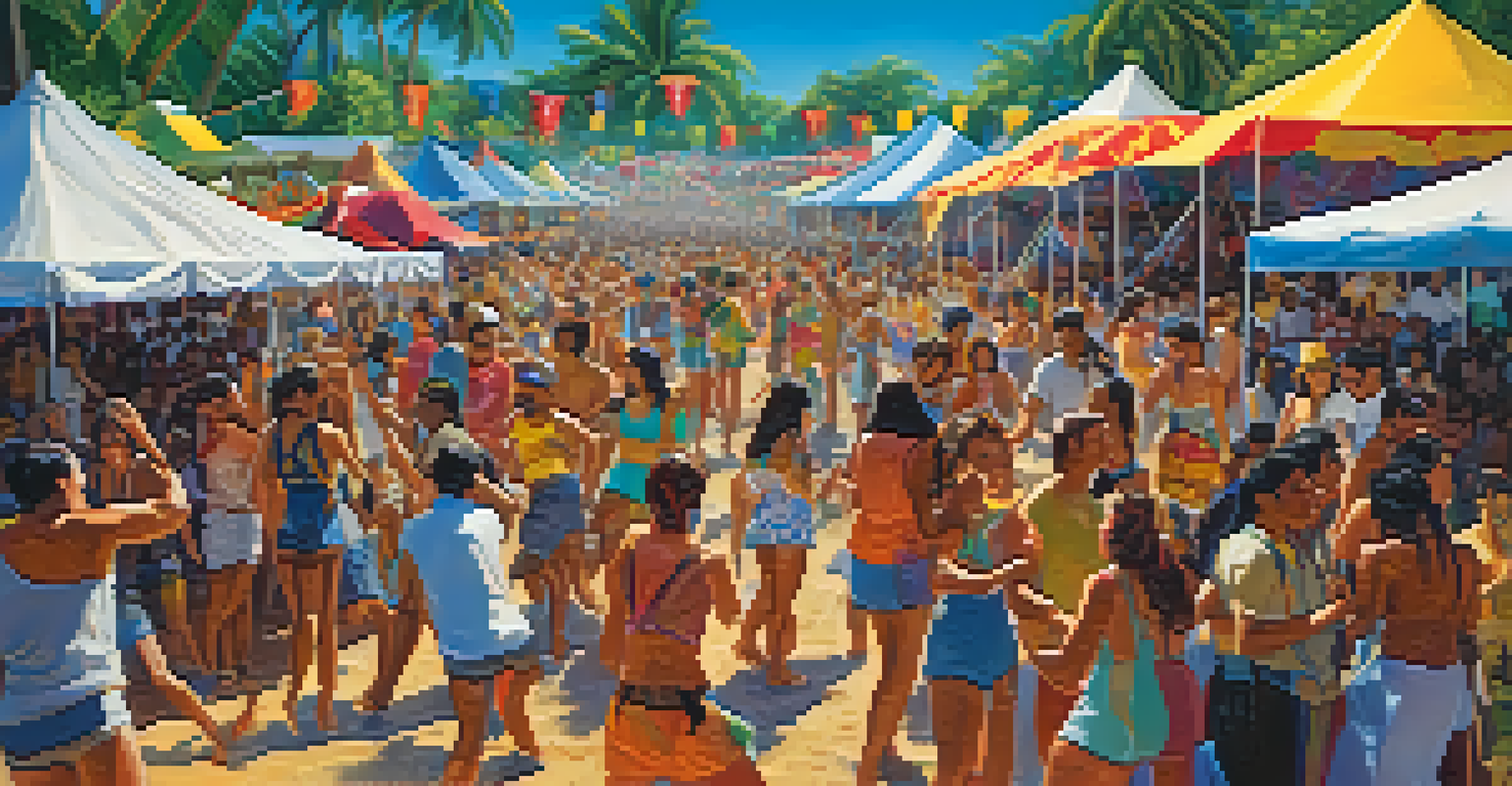The Birthplace of Genres: Honolulu's Impact on Hawaiian Sound

A Melodic Melting Pot: The Roots of Hawaiian Sound
Hawaiian music is a rich tapestry woven from various cultural influences. At its core, it incorporates traditional Polynesian chants and instruments, but it doesn't stop there. The arrival of Western music in the 19th century introduced new elements, creating a unique blend that we now recognize as Hawaiian sound.
Music is the shorthand of emotion.
In Honolulu, the crossroads of many cultures, these influences converged, giving birth to new genres. The vibrant music scene in this city allowed for experimentation and collaboration among local musicians and visiting artists. This dynamic environment fostered innovation that would shape the future of Hawaiian music.
For example, the ukulele, an instrument that has become synonymous with Hawaiian music, was influenced by Portuguese instruments brought over by immigrants. This illustrates how Honolulu has acted as a melting pot, allowing different musical styles to merge and evolve into something distinctly Hawaiian.
The Birth of Slack-Key Guitar: A Unique Hawaiian Genre
One genre that emerged from this rich cultural mix is slack-key guitar, characterized by its relaxed tuning and soulful melodies. Originating in the 19th century, it reflects the blending of Hawaiian and Spanish musical traditions. This style of guitar playing is often associated with storytelling, capturing the essence of island life.

Honolulu's musicians played a crucial role in popularizing slack-key guitar, making it a staple in Hawaiian music. Artists would gather in local homes and beaches, sharing their techniques and songs, which helped solidify the genre's presence. The city's vibrant music scene allowed these informal gatherings to flourish, nurturing talent and creativity.
Hawaii's Musical Fusion Origins
Hawaiian music is a unique blend of traditional Polynesian sounds and various cultural influences, particularly evident in genres like slack-key guitar and Jawaiian.
Today, slack-key guitar is celebrated worldwide, with artists like Ledward Kaapana and George Kahumoku Jr. bringing this genre to international audiences. Their work showcases how Honolulu continues to be a birthplace for new musical expressions, honoring tradition while embracing innovation.
Hula and Its Musical Accompaniment: A Cultural Symphony
The connection between Hawaiian music and hula is profound, with each art form enhancing the other. Hula is not just a dance; it tells stories and preserves history through movement and music. The rhythms and melodies of Hawaiian music are crafted specifically to accompany hula, creating a symbiotic relationship that is unique to the islands.
The beauty of Hawaiian music is that it tells a story, connecting the past with the present.
In Honolulu, hula schools and cultural festivals play a vital role in keeping this tradition alive. Local musicians often collaborate with hula dancers, composing songs that reflect the movements and emotions of the dance. This close partnership fosters a deeper understanding of Hawaiian culture and its artistic expressions.
As hula continues to evolve, so does its music, incorporating contemporary styles while honoring traditional roots. This evolution is evident in events like the Merrie Monarch Festival, where competitions highlight both established and emerging talent, ensuring that the birthplace of these genres remains vibrant and relevant.
Reggae and Jawaiian: The Island's Musical Fusion
In the late 20th century, Honolulu became a hub for reggae music, leading to the creation of a subgenre known as Jawaiian. This unique fusion combines traditional reggae rhythms with Hawaiian melodies and lyrics, creating a sound that resonates deeply with locals and visitors alike. Artists like Fiji and Kapena helped popularize this genre, showcasing its appeal.
The influence of reggae in Honolulu reflects the islands' openness to diverse musical styles. Local musicians embraced reggae's laid-back vibe and lyrical themes, seamlessly blending them with their own cultural narratives. This cross-pollination of genres enriched the island's music scene, making it more diverse and accessible.
Contemporary Hawaiian Music Evolution
Modern Hawaiian artists are creatively merging traditional elements with contemporary genres, showcasing the islands' ongoing innovation in music.
Jawaiian music serves as a perfect example of how Honolulu continues to innovate while staying true to its roots. The genre has gained popularity not just in Hawaii, but across the mainland, demonstrating the island's lasting impact on music and culture.
Contemporary Hawaiian Music: A Modern Renaissance
As we move into the 21st century, contemporary Hawaiian music is experiencing a renaissance. Artists are blending traditional elements with modern genres like pop, rock, and hip-hop, creating fresh new sounds that appeal to a wide audience. This evolution is a testament to Honolulu's ongoing role as a creative epicenter.
Musicians such as Jack Johnson and Bruno Mars have roots in Hawaii, showcasing how local influences can reach global audiences. Their success has opened doors for a new generation of Hawaiian artists, encouraging them to explore and experiment with their sound. This vibrant scene reflects the island's spirit of innovation and collaboration.
Events like the Hawaiian Music Awards and various music festivals celebrate this diversity, highlighting the importance of community in shaping contemporary music. By fostering a supportive environment, Honolulu continues to be a birthplace of genres, ensuring that Hawaiian sound remains dynamic and evolving.
The Influence of Technology on Hawaiian Music Creation
In today's digital age, technology plays a significant role in the creation and distribution of Hawaiian music. Musicians are using social media platforms, streaming services, and digital production tools to reach wider audiences than ever before. This accessibility allows for greater experimentation and collaboration across genres.
Honolulu's music scene has embraced these advancements, with local artists leveraging technology to produce high-quality recordings and share their work globally. The result is a vibrant mix of sounds that reflect both tradition and modernity. This fusion is evident in the way new artists are engaging with classic Hawaiian styles while infusing them with contemporary influences.
Preserving Hawaiian Music Heritage
Honolulu plays a vital role in preserving traditional Hawaiian music through cultural events and educational initiatives, ensuring its legacy for future generations.
Moreover, online platforms provide opportunities for emerging musicians to connect with established artists, fostering mentorship and collaboration. This network strengthens the community and promotes the growth of Hawaiian music, ensuring that its sound continues to evolve while honoring its rich heritage.
Honolulu's Role in Preserving Hawaiian Music Traditions
While innovation is crucial, preserving traditional Hawaiian music is equally important. Honolulu is home to various cultural organizations and initiatives dedicated to safeguarding these musical legacies. Through workshops, educational programs, and performances, they ensure that future generations understand and appreciate their heritage.
Events like the Aloha Festivals and the Hawaiian Slack Key Festival celebrate traditional music, drawing locals and tourists alike. These gatherings not only showcase the beauty of Hawaiian sound but also serve as a reminder of its historical significance. They create a space for community engagement and cultural exchange.

By prioritizing both preservation and innovation, Honolulu strikes a delicate balance that enriches its music scene. This commitment to honoring the past while embracing the future underscores the city's vital role as the birthplace of genres, ensuring that Hawaiian music remains vibrant and relevant for years to come.